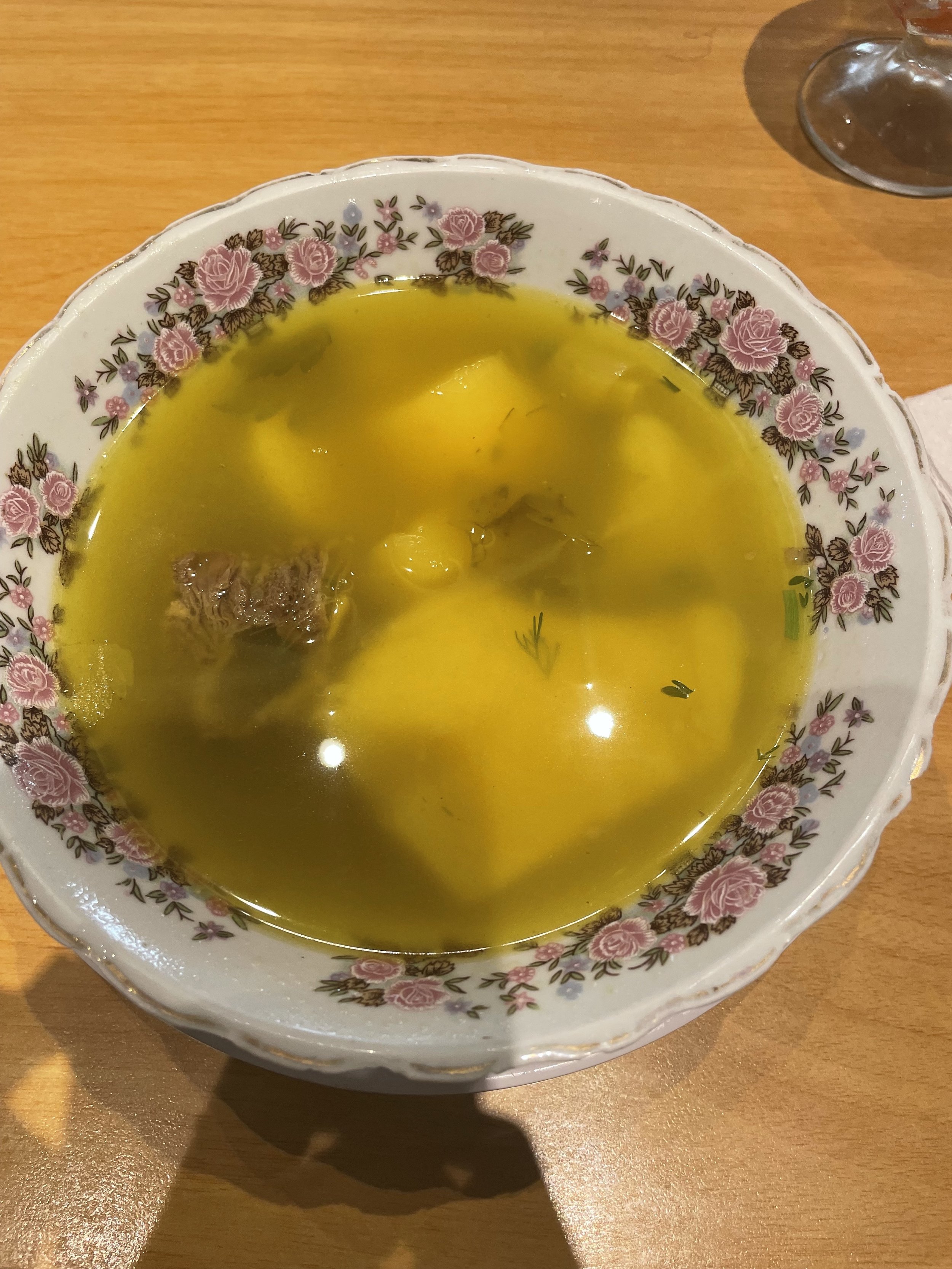Almuerzo Corriente
Stewed chicken, rice & beans, beet salad, patacones, and guava juice
Something to know about Colombia is that it is a home-cooking country. By that I mean that most people cook and eat at home rather than ordering out. Yes, comida rápida, fast food, exists, and yes people do eat out, but people tend to eat at home more and when they don’t, there’s an entire class of food available to buy outside that has the same delicious home-cooked flavor. Almuerzo corriente is the name of these nutritious, tasty, filling, affordable lunches that are sold all over the city at lunchtime, and they are one of many things that I miss about Cartagena.
Almuerzo corriente is also known as almuerzo ejecutivo, corrientazo, or just corriente, and it's the traditional lunch in Colombia. The specific elements vary from region to region, but almuerzo corriente usually consists of a protein, rice, salad, plantain, and beans or lentils. Corriente restaurants can be easily identified by a chalkboard or whiteboard on the sidewalk or by the door with the menu options for the day listed on them. The offerings change a little bit each day and are prepared in huge batches and served until they run out. So, once its gone, its gone, and the dish is erased off the board. Corriente restaurants are open every day from around 11pm to 2pm, and the best ones are always packed, so you have to be sure to show up early to avoid arriving to an empty whiteboard! You can find a ton of corriente restaurants around the city, but there is always one that is most popular in each neighborhood due to the perfect balance of good prices, good flavor, and a variety of options.
Sopa de hueso
A lot of these restaurants are family-operated and have open-air seating, like the terraza of a home. Once you arrive you just walk in, find a table, and sit down. It's always a good idea to check out the menu list outside before sitting down because these restaurants are often really busy, and once you flag down the waitress, she tells you what's left on the menu for the day and takes your order with haste.
After you order, the waitress brings you a little container that holds silverware and half of lime for each person. Soon after that you are served soup, usually either sopa de hueso (beef bone), sopa de pollo (chicken), or sopa de pescado (fish). When I had the option, I always opted for sopa de hueso because it was consistently the tastiest one to me, and because I usually ordered chicken or fish as my main dish. Something clever that I was taught is that you should squeeze your lime juice into your soup and then use the rind to clean your utensils. The funny thing is that for some reason I rarely encountered a lime that had enough juice to squeeze out. I’ve talked about this with friends, and I can confirm that it's a surprise for many when they do. BUT you must squeeze out even the tiniest bit of juice because even though the soups are really delicious as they are, the citrus of the lime truly unlocks a new level of flavor, and it's amazing. If you can’t already tell, I’m a foodie, and Cartagena also turned me into a soup fanatic haha.
Lunch made at home!
Before you can finish your soup, your food usually comes out. Like mentioned before, each plate comes with rice, salad, plantain (sweet tajadas or salty patacones), beans or lentils, and your protein. My favorite dishes to order were pollo guisado or chuleta en salsa. Another motivation to show up early is that that is when the restaurants may serve rice like arroz de coco or arroz de fideo, but later on during lunch time there is often only white rice left. A small drink is included with your meal, and in Cartagena it is usually agua de panela or guarapo, traditional drinks made using raw blocks of sugarcane called panela. Some places also serve dessert, usually a little bowl of fruit. After enjoying your meal, you pay, usually between 8.000 and 20.000 COP (certain dishes like fish or grilled meats are a little bit more expensive) and try to fight off the incoming food coma as you head back to school or work!
The almuerzo restaurants cater to working people who come during their lunch break and for that reason they only stay open for a few hours. Like I mentioned before, these lunches are home-cooked meals, and people often prepare the same dishes at home for lunch. I really appreciate that almuerzo corriente exists so that people can still enjoy a really good meal even if they work or study far away from home!
El postre: papaya, banano y patilla
DISCLAIMER: This site (octaviachristopher.com) is not an official Fulbright Program site. The views expressed on this site are entirely those of its author and do not represent the views of the Fulbright Program, the U.S. Department of State or any of its partner organizations.


